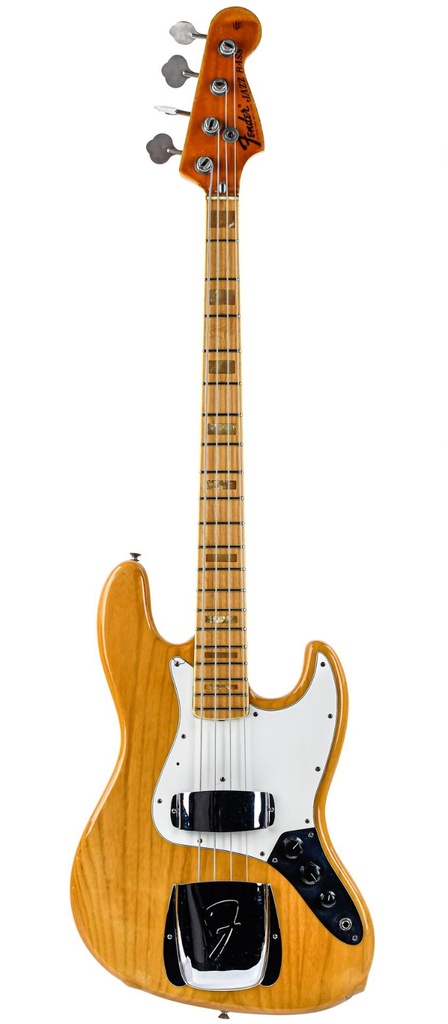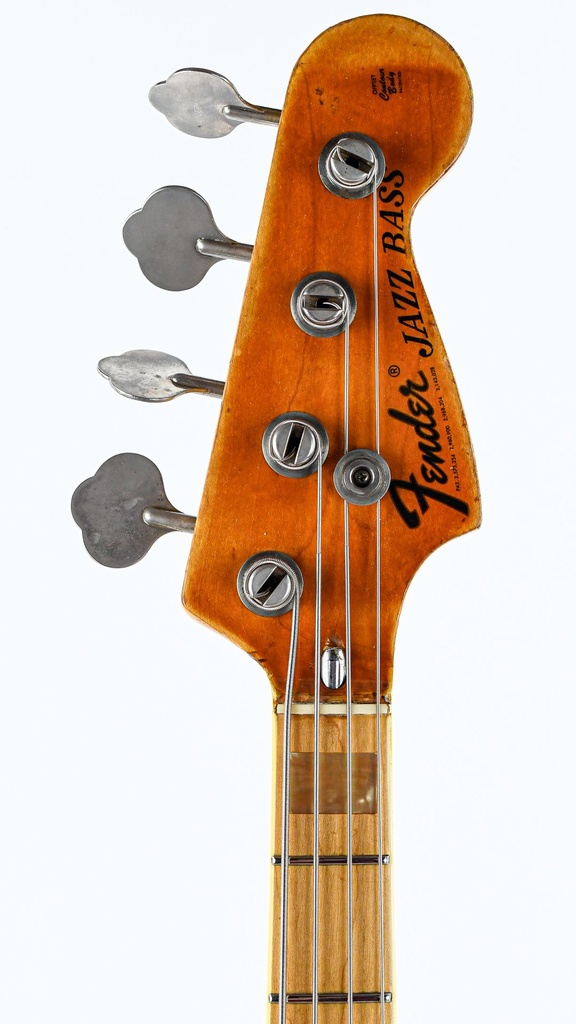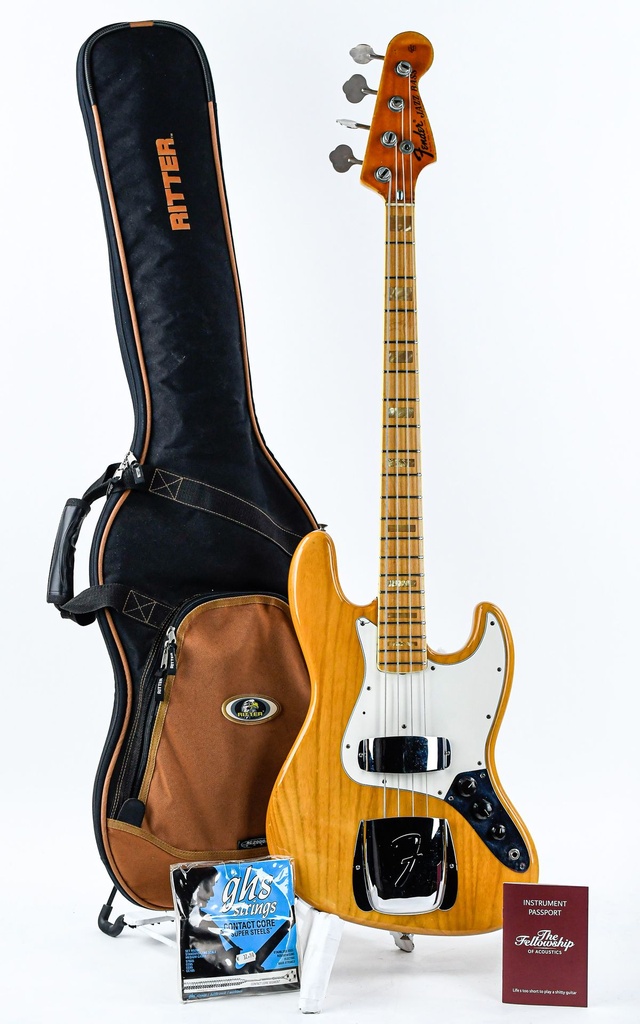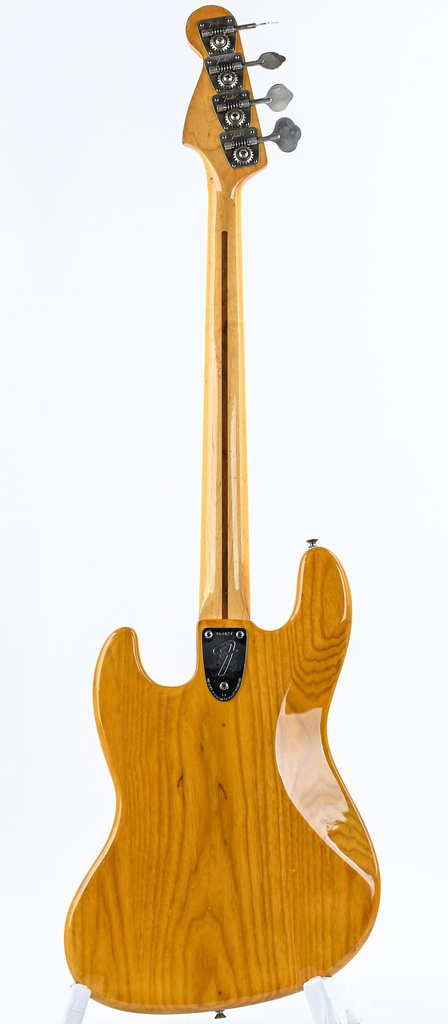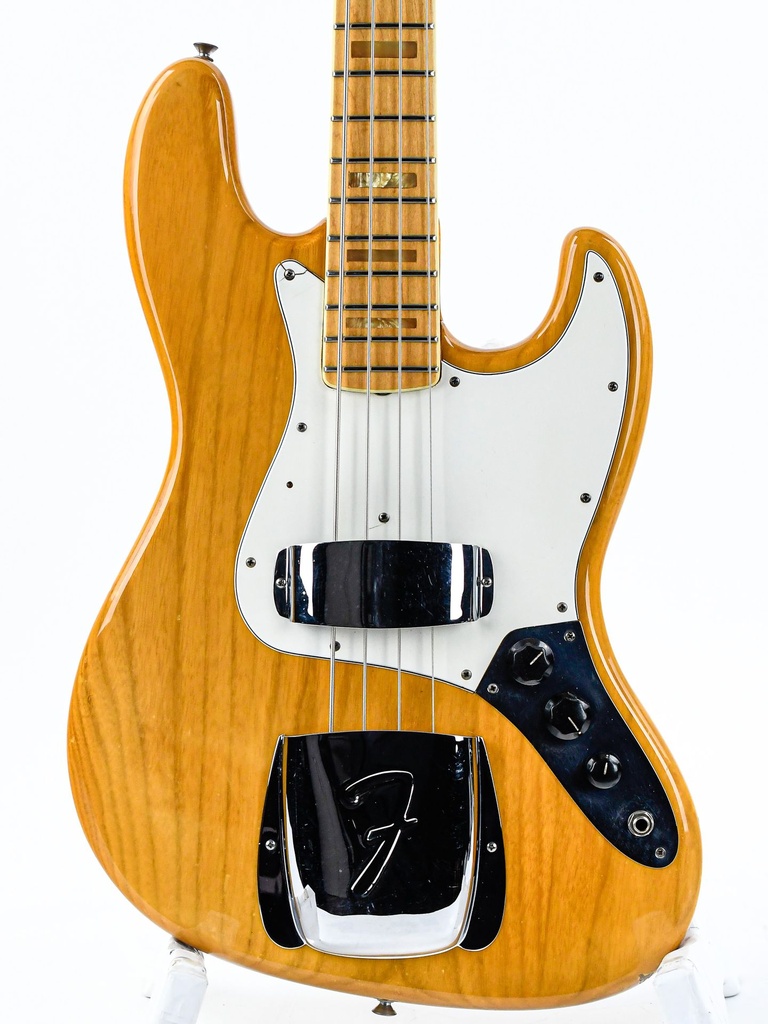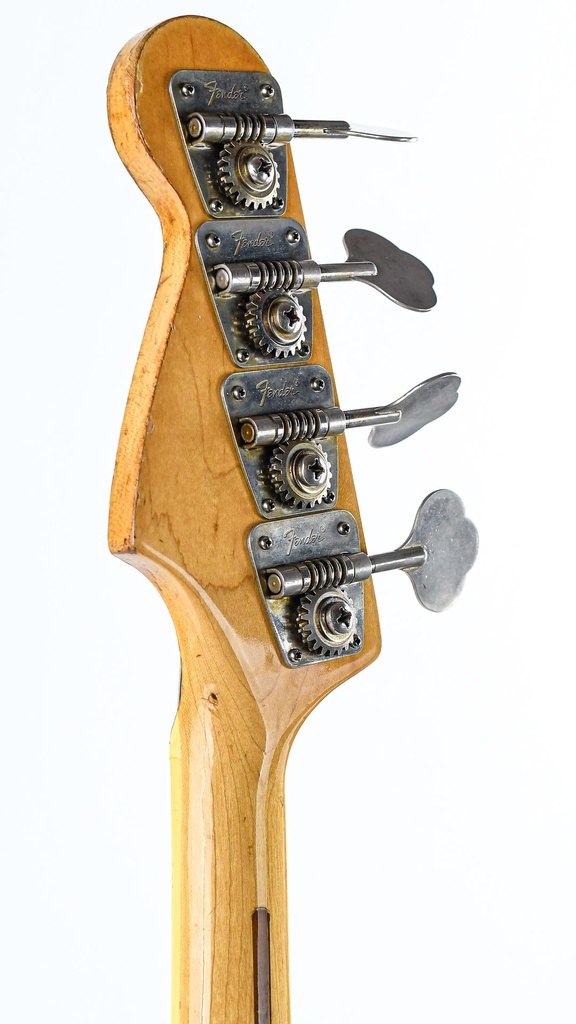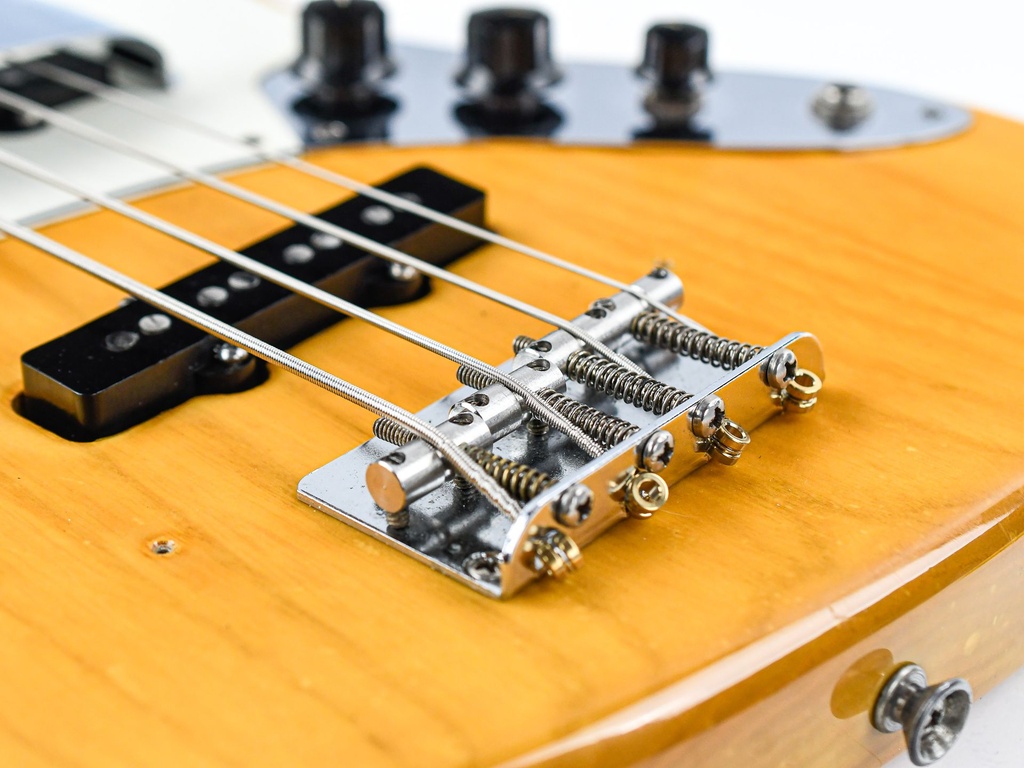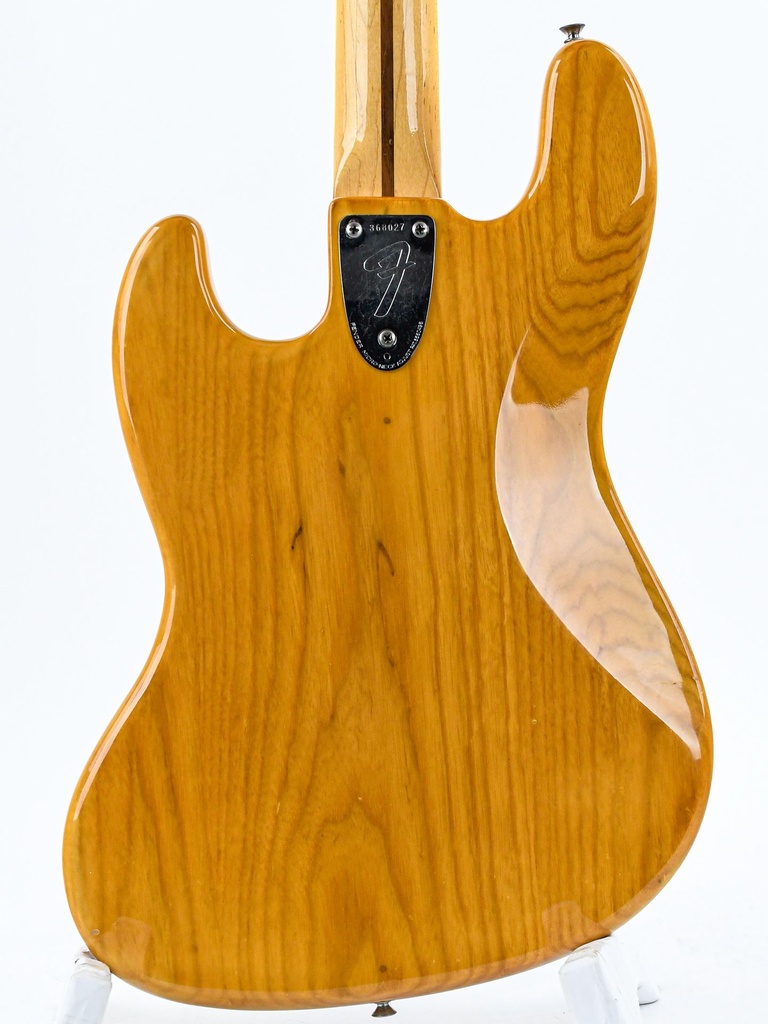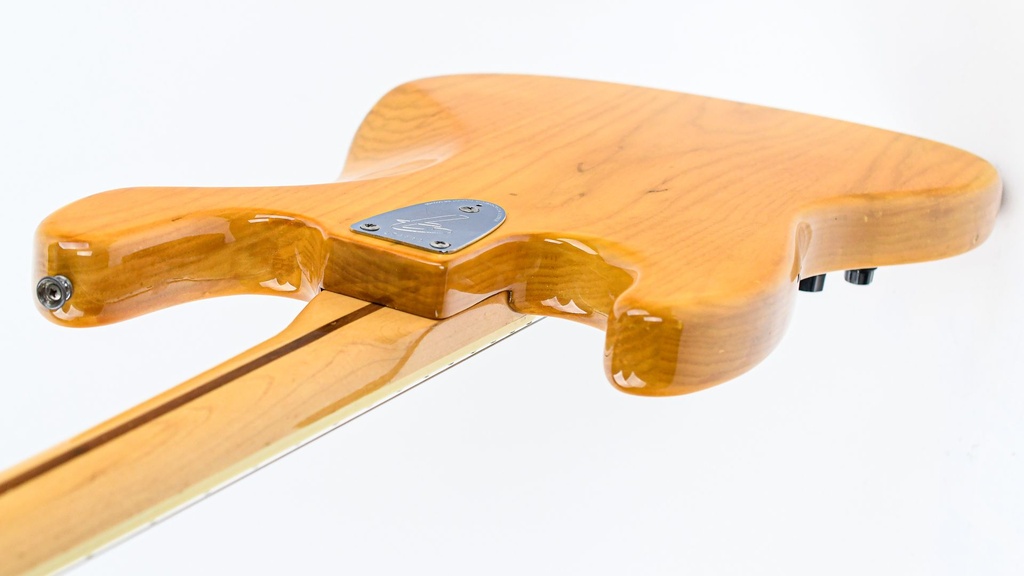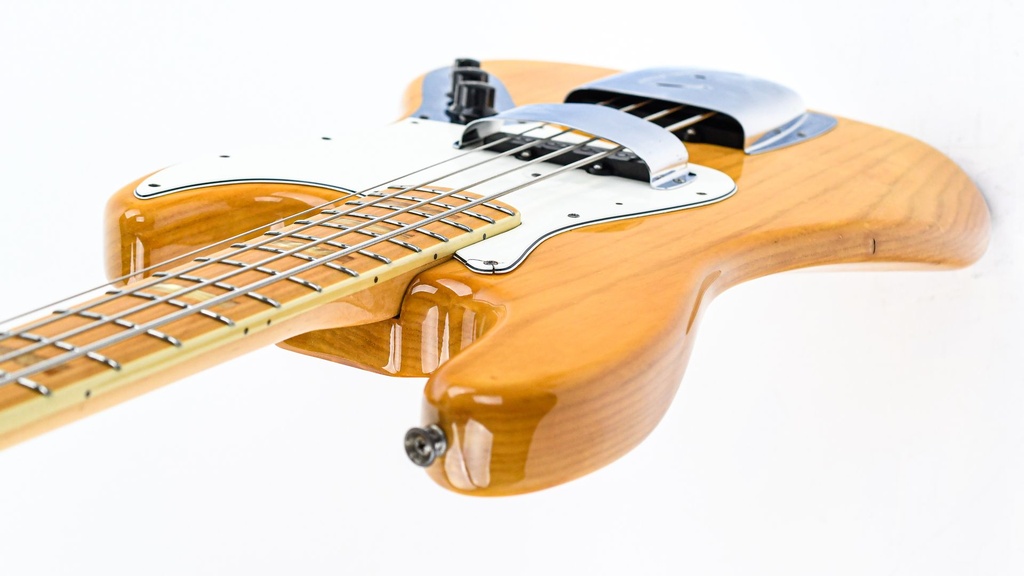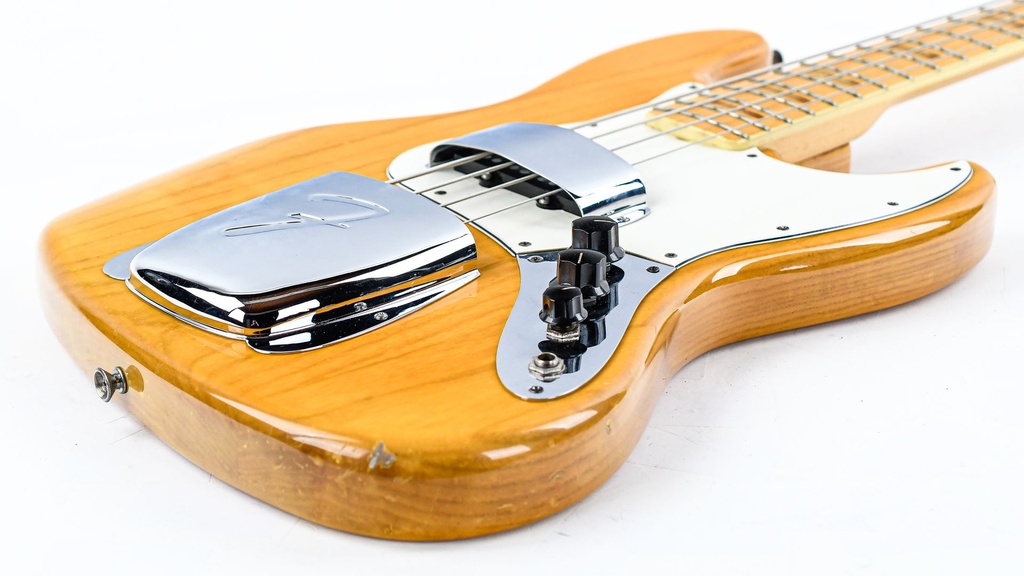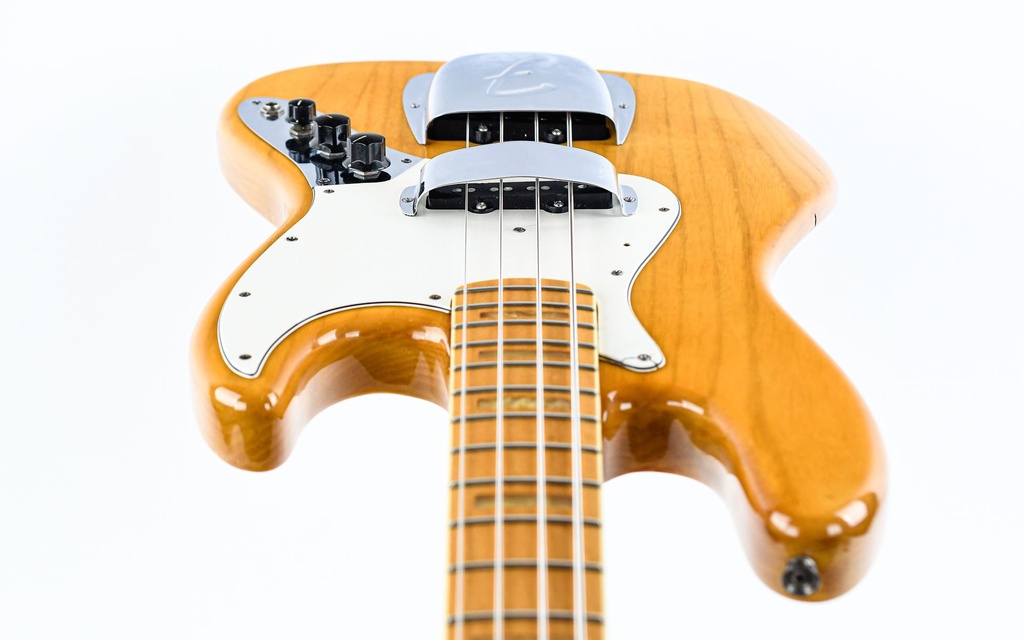Fender Jazz Bass 1974
€ 4,999.00 € 4,999.00
€ 4,999.00
This unique '72 Fender Jazz Bass has a special combination of specs, and therefore has everything you normally look for in a mid-70s Fender bass!
Fender Jazz Bass 1974
In de jaren '70 veranderde er niet alleen veel in de wereld, maar ook bij de firma Fender Musical Instruments Corporation. De bekende vier-punts nekverbinding maakte plaats voor de befaamde drie-punt verbinding (met micro-tilt systeem!), bullet truss-rod die verstelbaar is aan de kop, flush pole pickups en een variatie aan nieuwe finishes.
Alle specs verwijzen naar het jaar 1974. De witte slagplaat, de parel block inleg, de witte binding om de hals, en natuurlijk de driepunt halsverbinding. Een bijzonder detail is echter dat het serienummer van deze Jazz bas verwijst naar het jaar 1972!
Wat de '74 Jazz bassen extra geliefd maakt zijn de upgrades die gedaan waren aan de pickups. De pickups zijn gewikkeld met emaille draad en zijn gedoopt in schellak in plaats van was. De originele draad was formvar, wat helderder klonk. Het emaille heeft hoge tonen die een beetje weggerold zijn en het middengebied is meer geaccentueerd, daardoor zijn ze erg open, groot en 'punchy'. Allemaal terwijl de shellac de pickups ook nog minder microfonisch maakt.
In de neck-pocket zijn minimale resten te zien van een Sunburst-finish, de rest van de lak op de body doet dan ook vermoeden dat de body lang geleden een refin heeft gehad naar natural. Op de vervangen potmeters na (en de finish) is de bas volledig origineel, inclusief de originele 'Ashtray' stijl brug en pickup covers!
Met haar 5kg voldoet ze absoluut aan de jaren-70 verwachtingen, maar dat mag de pret niet drukken. Dit is namelijk gewoon een waanzinnige bas, met een moddervette toon en een zeer coole uitstraling.
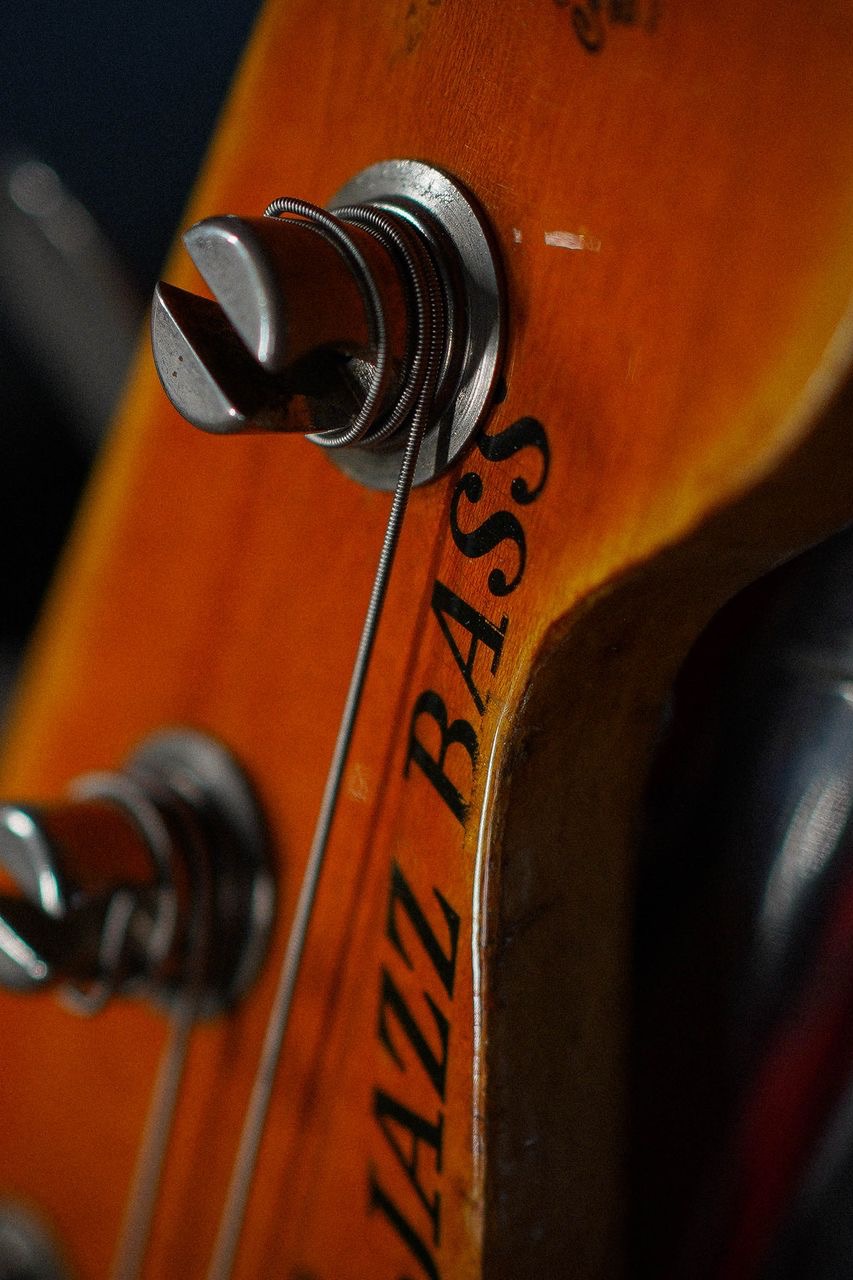
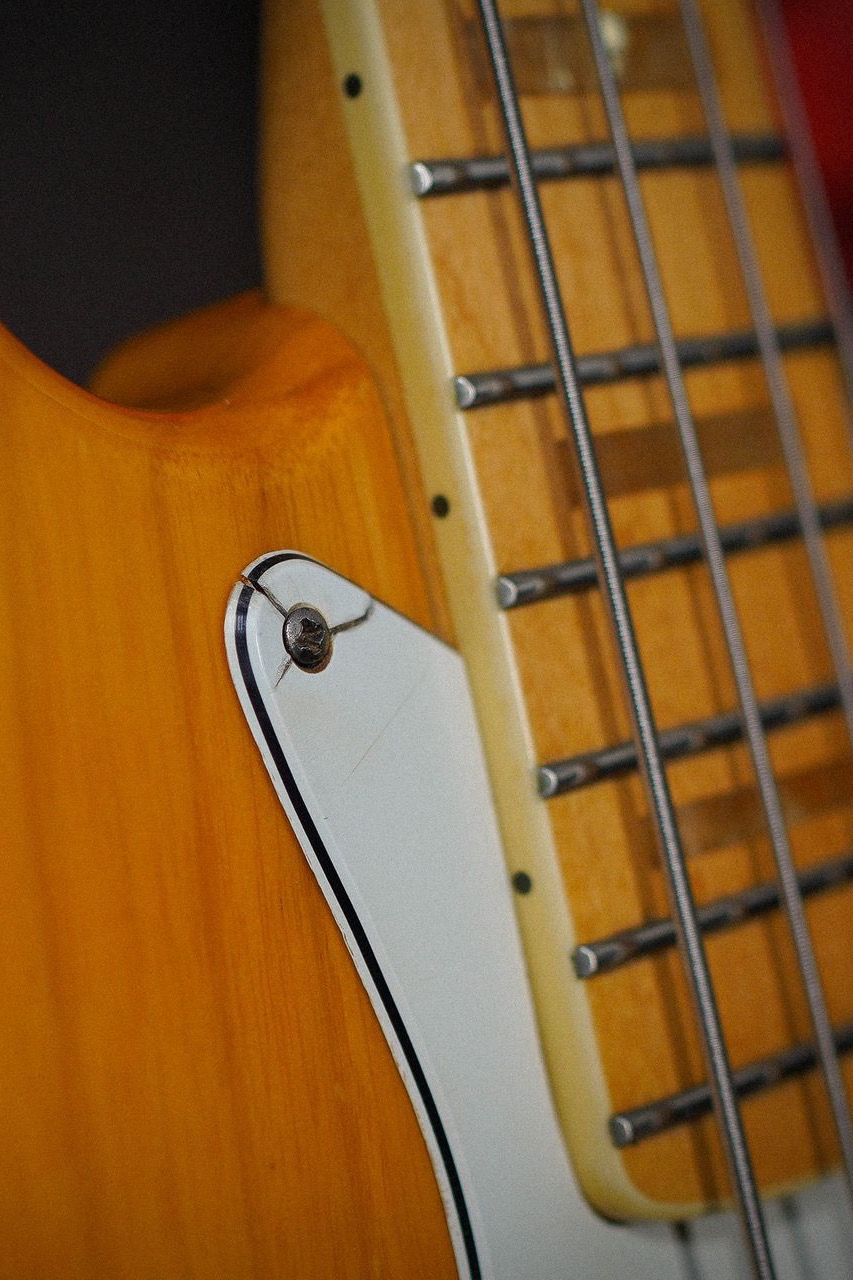
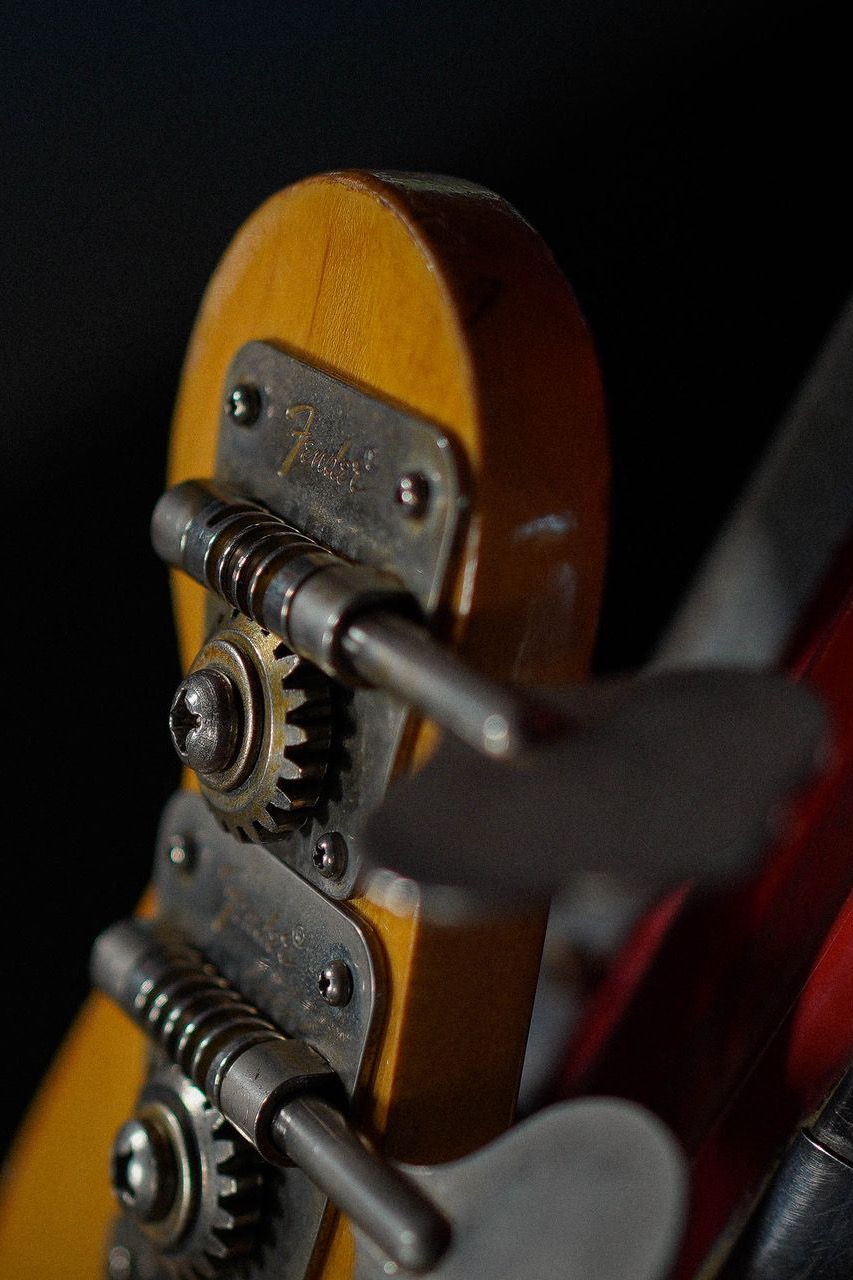
The 1970s saw many changes not only in the world, but also at the Fender Musical Instruments Corporation. The famous four-point neck joint gave way to the famous three-point joint (with micro-tilt system!), bullet truss-rod adjustable at the headstock, flush pole pickups and a variety of new finishes.
All the specs refer to the year 1974. The white pickguard, the pearl block inlay, the white binding around the neck, and of course the three-point neck joint. A special detail, however, is that the serial number of this Jazz bass refers to the year 1972!
What makes the '74 Jazz basses extra popular are the upgrades that were done to the pickups. The pickups were wound with enamel wire and dipped in shellac instead of wax. The original wire was formvar, which sounded brighter. The enamel has the treble rolled away a bit and the midrange is more accentuated, making them very open, big and 'punchy'. All while the shellac also makes the pickups less microphonic.
Minimal remnants of a Sunburst finish can be seen in the neck-pocket, so the rest of the paint on the body suggests that the body has had a refin to natural long ago. Apart from the replaced potentiometers (and the finish), the bass is completely original, including the original 'Ashtray' style bridge and pickup covers!
At 5kg, it definitely lives up to 1970s expectations, but that shouldn't spoil the fun. After all, this is just an insane bass, with a fat tone and a very cool look.



In den 1970er Jahren gab es nicht nur in der Welt, sondern auch bei Fender Musical Instruments Corporation viele Veränderungen. Das berühmte Vier-Punkt-Halsgelenk wich dem berühmten Drei-Punkt-Gelenk (mit Micro-Tilt-System!), an der Kopfplatte verstellbare Bullet-Truss-Rods, flush-pole Pickups und eine Vielzahl neuer Finishes.
Alle Angaben beziehen sich auf das Jahr 1974. Das weiße Schlagbrett, die Perlblockeinlage, das weiße Binding um den Hals und natürlich die Dreipunktverbindung am Hals. Ein besonderes Detail ist jedoch, dass die Seriennummer dieses Jazz Basses auf das Jahr 1972 verweist!
Was die 74er Jazz-Bässe besonders beliebt macht, sind die Upgrades, die an den Tonabnehmern vorgenommen wurden. Die Tonabnehmer wurden mit Lackdraht umwickelt und in Schellack statt in Wachs getaucht. Der ursprüngliche Draht war Formvar, der heller klang. Mit dem Emaildraht wurden die Höhen etwas zurückgenommen und die Mitten stärker betont, wodurch die Tonabnehmer sehr offen, groß und "druckvoll" klingen. Gleichzeitig macht der Schellack die Tonabnehmer weniger mikrofonisch.
Minimale Reste einer Sunburst-Lackierung sind in der Halstasche zu sehen, der Rest des Lacks auf dem Korpus deutet darauf hin, dass der Korpus vor langer Zeit auf Naturton umlackiert wurde. Abgesehen von den ausgetauschten Potentiometern (und der Lackierung) ist der Bass komplett original, einschließlich der originalen "Aschenbecher"-Brücke und Pickup-Abdeckungen!
Mit seinen 5 kg entspricht er definitiv den Erwartungen der 1970er Jahre, aber das sollte den Spaß nicht verderben. Schließlich handelt es sich um einen verrückten Bass mit einem schlammigen Ton und einem sehr coolen Look.



Specifications
| Brand and Condition | |
|---|---|
| Brand | Fender |
| Condition | Excellent |
| Hardware | |
|---|---|
| Bridge | 4-Saddle |
| Tuning Machines | Fender Open Gear |
| Body | |
|---|---|
| Body Shape | J-Bass |
| Colour Family | Natural |
| Finish | Natural, Gloss |
| Body Material | Ash |
| Body Details | 3-Ply White Pickguard |
| Neck | |
|---|---|
| Neck Material | Maple |
| Neck Profile | U |
| Fingerboard Material | Maple |
| Fingerboard Radius | 7.25" |
| Neck Details | Pearl Block Inlay, Cream Binding |
| Nutwidth | 39.2 mm / 1.54" |
| Scale Length | 864 mm - 34" |
| Electronics | |
|---|---|
| Pickup Configuration | S-S |
| Controls | 2 Volumes, Tone |
| Miscellaneous | |
|---|---|
| Weight | 5 kg |
| Travels in | Gigbag |
| Accessories | TFOA Passport |
| Photos of | Actual Instrument |
